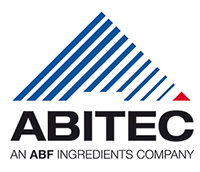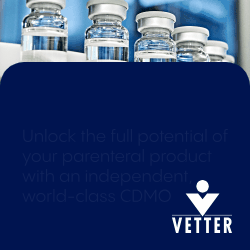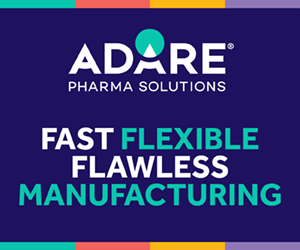Bioavailability & Solubility
DEVELOPMENT TIMELINES - Drug Development Times, What it Takes - Part 2
Josef Bossart, PhD, reviews the Development and Review Times associated with new molecular entity (NME) approvals throughout the 2010 to 2018 period.
FORMULATION FORUM - Rational Design & Development of Long-Acting Injectable Dosage Forms
Due to the advantages of parenteral sustained-release drug delivery (also known as long-acting injectables, LAIs) different types of sustained-release injectable delivery systems have been….
leon & Nucleus Medical Announce Collaboration to Develop & Manufacture Novel Transplantation Medicine
This license agreement enables Nucleus to utilize proprietary MicroJet Reactor (MJR) nanotechnology to improve stability, increase solubility and enhance bioavailability of its lead asset in…
Oculis Announces Positive OCS-01 Phase 2 Data
Oculis S.A. recently reported positive data from a phase 2 study of OCS-01, a novel eye drop formulation of dexamethasone, in development for the treatment…
DEVELOPMENT TIMELINES - Drug Development Times, What it Takes - Part 1
Josef Bossart, PhD, explains how accurately estimating a product’s clinical development timelines is more than simply adding up the individual timelines, almost always optimistic. You need to “know” the numbers, not just calculate them.
Vivera Pharmaceuticals Enters Agreement Clinical Study Agreement With Parexel Biotech
Vivera Pharmaceuticals, Inc. recently announced it has signed an agreement for Clinical Development Services with Parexel International, a leading provider of solutions to accelerate the…
2020 COMPANY PROFILES & CAPABILITIES
For each participating company, this section presents a detailed summary highlighting their core technologies, capabilities, technologies, and services.
Ashland Launches New Excipient Solutions for Improved Drug Delivery
Ashland recently announced the launch of three new pharmaceutical solutions, Plasdone S630 Ultra, Benecel XR and XRF, and Viatel bioresorbable polymers. Ashland is expanding its portfolio to meet formulators’ growing needs….
EXECUTIVE INTERVIEW - Cambrex: Providing Big Value in the Small Molecule Outsourcing Market
Simon Edwards, President, CDMO Sales & Marketing at Cambrex, discusses the biggest trends in the small molecule outsourcing market.
FORMULATION FORUM - Amorphous Formulations for Insoluble Drugs: Rational Design & Practical Approaches on Formulation Screening & Development
Jim Huang, PhD, discusses the issues associated with amorphous formulations, including solid state stability, chemical stability, reproducibility of API manufacturing, impurity of API, stability in aqueous solution, in vitro in vivo performance, and process and scale-up.
ABITEC Improves Solubility of Topical & Transdermal Applications With Functional Lipid Excipients
ABITEC Corporation, a global manufacturer of functional lipid excipients continues to pursue new technologies that solve various formulation challenges in the pharmaceutical market.
Eloxx Pharmaceuticals Presents Positive New Data at ARVO
Eloxx Pharmaceuticals, Inc. recently presented new findings related to preclinical inherited retinal disease therapeutic development at the ARVO 2019 Annual Meeting in Vancouver, BC, on…
FORMULATION FORUM - Formulation Development From Preclinical to First-In-Human
Jim Huang, PhD, says when a compound enters preclinical development for a GLP tox study from the drug discovery stage, formulators have innovative options on how to develop a tox and clinical formulation that ensures the success of IND and first dose in human.
AMORPHOUS SOLID DISPERSIONS - Increasing Solubility From API to Tablets
Paulo Lino, PhD, and João Henriques discuss the main development goals and present a framework for a streamlined development of amorphous solid dispersion formulations by spray drying.
FORMULATION FORUM - Revitalization of Older Drug Products Using Innovative Formulation Technologies by 505(b)(2) Regulatory Pathway
Jim Huang, PhD, says more than 50% of approved drugs on the market contain poorly water soluble APIs, which typically are associated with poor bioavailability, suboptimal drug delivery, ineffective drug efficacy, and side effects, and this creates a huge opportunity in generating 505(b)(2) products.
SPECIAL FEATURE - Excipients: Formulators Want Excipients for Solubility & Beyond
Contributor Cindy H. Dubin speaks with leading excipient companies to discuss the current role excipients are playing in continuous manufacturing, biopharma formulation, and controlled- and immediate-release delivery.
SPECIAL FEATURE - Improving Bioavailability & Solubility: Chemical & Physical Modification vs. Formulation Development
Contributor Cindy H. Dubin speaks with several leading companies to explore chemical and physical modification versus formulation development, and new technologies and techniques for improving bioavailability and solubility.
FORMULATION FORUM - Formulation Research Strategy for Discovery-Stage New Drug Candidates
Jim Huang, PhD, and Edward Orton, PhD, say it is critically important CROs or CDMOs that support discovery and preclinical research have the requisite preformulation, formulation, and biopharmaceutics expertise as well as the proprietary methodologies to develop formulations from small quantities of drug candidates for different routes of administration.
FORMULATION FORUM - Sophisticated Formulation Approaches for Insoluble Drug Candidates
Jim Huang, PhD, discusses how a sophisticated drug delivery approach involves collaboration, technical experience, and years of working knowledge in drug development at different stages of the process.
Entera Bio & Amgen Enter Strategic Research Collaboration
Entera Bio Ltd. recently announced it has entered into a research collaboration and license agreement with Amgen in inflammatory disease and other serious illnesses. Entera…
Bioavailability and Solubility Challenges
Given that a large number of drugs fail to reach the market due to poor solubility and bioavailability, the industry is seeking various methods to mitigate this challenge while many choose to re-formulate existing product candidates. Either way, the demand for novel bioavailability and solubility enhancement methods has grown significantly. To cater to this increasing demand, many contract manufacturers and technology developers have emerged.
What is Solubility?
Solubility is the ability for a drug to be dissolved in an aqueous medium. Drug solubility is defined as the maximum concentration of a substance that can be completely dissolved in a given solvent at a certain temperature and pressure level.
Solubility of drugs is measured by the amount of solvent needed to dissolve one gram of the drug at a specific temperature. For example, a drug that is very soluble needs less than one part solvent to dissolve one gram of the drug. How soluble a drug is varies widely—a drug that is considered soluble needs 10-30 parts, one that is slightly soluble needs 100-1,000 parts and one that is practically insoluble or insoluble needs more than 10,000 parts. How soluble a drug is depends on the solvent, as well as temperature and pressure.
Since 1975, approximately 60 marketed drugs have leveraged solubilization technologies to enhance oral bioavailability. In the preceding 36 years, from the time the FDA required submission of an NDA in 1938, solubilization technology was virtually unused on a regular basis. Apparently, the disease areas focus, drug discovery methodologies, and the lack of mature solubilization platforms restricted the use prior to the 1970s.
In comparison, the past nearly 4 decades have shown robust growth in the reliance on solubilization platforms, accounting on average for around 9% of all NMEs approved from 1975 through 2022, and more than 10% in the past decade. Some years stand out to validate the need and use of solubilization platforms. For example, in 2005, 20% of NMEs approved used technologies including solid dispersion, lipid, and nanocrystal platforms. The data for the most recent 4-year period (2010-2013) seems to represent a slight decline in growth, but it is still early in the decade, and the data set is relatively small. Based on the trends throughout the past 4 decades and the changing chemical space in drug development, we expect the decade will show additional and significant current growth in use of solubilization technologies once we have visibility into the full 10-year period.
Bioavailability & Solubility Impediments
The biggest impediment in addressing bioavailability issues likely lies with a lack of deep familiarity with enabling technologies. Improving drug bioavailability begins with a thorough evaluation of the API’s physical and chemical properties in relation to solubilization in the dose, but more importantly its dissolution in vivo at the site of absorption.
These technologies, such as nanoparticles, cocrystals, computer-aided prodrug design, and electrospinning, represent innovations aimed at enhancing the solubility of a candidate molecule, particularly in the gastrointestinal tract. Technologies such as electrospinning, deep eutectic solvents, and ionic liquids are upcoming formulation approaches to enhance drug solubility, and as the science matures, and the relative strengths and weaknesses are better understood, we expect to see further application of these innovative approaches. They have shown to be successful for some compounds, and have a place alongside other bioavailability enhancement technologies, where each strategy has its benefits and corresponding liabilities. For them to be successful and widely adopted however, they will also have to provide a compelling benefit compared with other well-understood, and commercially precedented technologies, such as amorphous solid dispersions and lipid-based formulations.
Extreme compounds require either significant amounts of stabilizers to maintain the amorphous state or they are not amenable to common manufacturing technologies with reasonable cost of goods due to their low solubility in organic solvents. These include amorphous solid dispersions using polymethacrylate, cellulose, or povidone-based polymeric carriers, she says. In addition, thermostability of new molecular entities becomes an issue as most new molecules have melting points well above 400°F. Alternative production methods for amorphous solid dispersions can address these issues.











